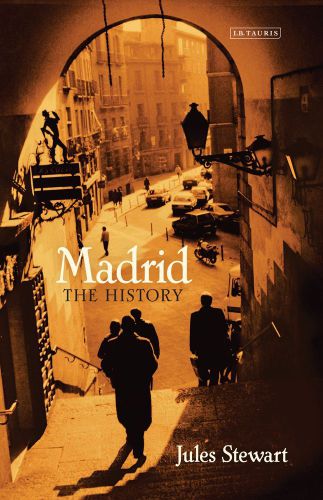

Most ebook files are in PDF format, so you can easily read them using various software such as Foxit Reader or directly on the Google Chrome browser.
Some ebook files are released by publishers in other formats such as .awz, .mobi, .epub, .fb2, etc. You may need to install specific software to read these formats on mobile/PC, such as Calibre.
Please read the tutorial at this link: https://ebookbell.com/faq
We offer FREE conversion to the popular formats you request; however, this may take some time. Therefore, right after payment, please email us, and we will try to provide the service as quickly as possible.
For some exceptional file formats or broken links (if any), please refrain from opening any disputes. Instead, email us first, and we will try to assist within a maximum of 6 hours.
EbookBell Team

0.0
0 reviewsAt the heart of the Castilian plateau, far from the coastal towns and ports of Spain, sits the great city of Madrid. Perched some 2,200 feet above the distant sea, it is at once the loftiest and also the most enigmatic of Europe’s capitals: hard to decipher for the Spanish and for foreigners alike.
Its intense character and the abrupt manner and hectic lifestyle of the MadrileГ±os can make even other Spaniards feel exhausted. Yet, Madrid has a rich historical and cultural life which attracts almost 8 million visitors per year, drawn to its beautiful palaces and churches, the magnificent collections of the Prado and everywhere the echoes of a faded empire.
The grand entry of Fernando and Isabel to Madrid in the late-fifteenth century brought about the unification of Spain. However it was not until 1561 that Madrid was declared the capital. During Spain’s golden age in the sixteenth and seventeenth centuries, Madrid was a centre of commerce – the hub of a global empire which stretched from the Andes to the Philippines – and of culture – the greatest Spanish writers and poets of the Spanish Renaissance, including Cervantes, Lope de Vega, Calderón de la Barca and Francisco de Quevedo, as well as the immortal Spanish painters Velázquez and Goya, all gained their fame working in Madrid. In the nineteenth and twentieth centuries Spain struggled against dictatorial rulers – from Napoleon to Franco – and witnessed a succession of wars and uprisings – from the Spanish War of Independence to the Spanish Civil War. Yet the city ultimately emerged triumphant and in the twenty-first century stands as the third-largest city in Europe.
Jules Stewart here provides an insider’s account of Madrid and unveils the history and culture of one of Europe’s most fascinating, but least-understood cities.
**
ReviewMadrid is one of Europe's most fascinating cities, with its past and present bristling with paradox. Jules Stewart is perfectly suited to the task of shedding original light on a complex story. He is an incisive historian, with a good journalist's eye for the telling anecdote and an evident love for and appreciation of Spanish culture. Suitable for travel and armchairs! -Jimmy Burns, author of La Roja: A Journey through Spanish Football
Jules Stewart is a historian and author. His books include Albert: A Life;On Afghanistan’s Plains, Crimson Snow; The Savage Border; Spying for the Raj; and The Khyber Rifles. He lives in London and Spain and has visited Madrid regularly over the course of the last 40 years.